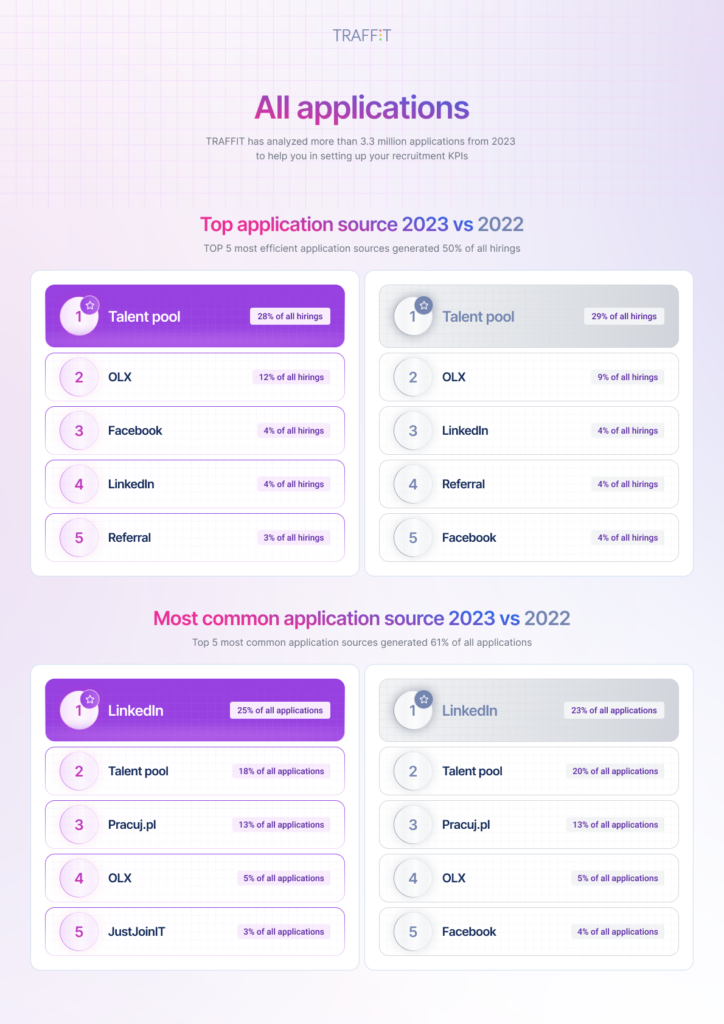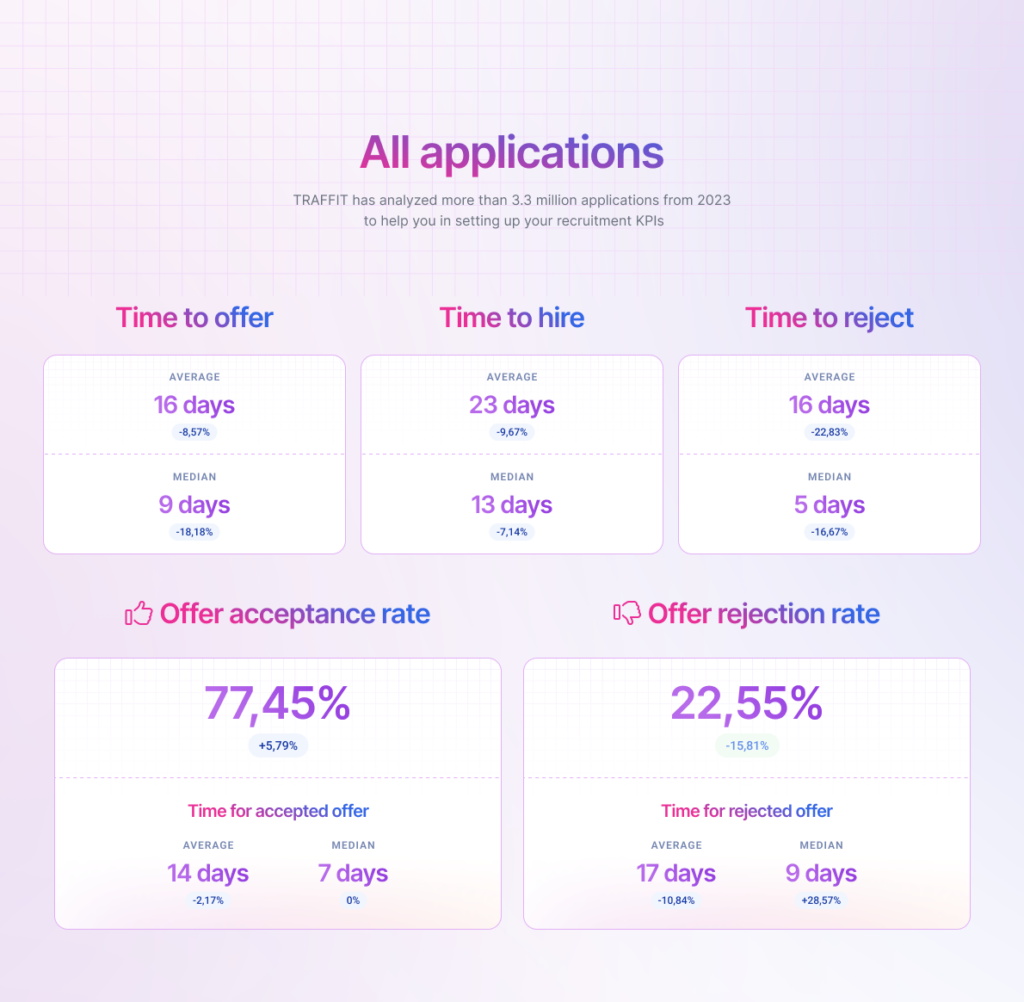Benchmarking is a key tool for understanding the job market, identifying areas for improvement, and adjusting team and organizational actions to the constantly changing market conditions.
But hold on a moment… Let’s start from the beginning – after all, not everyone knows exactly what the term “benchmarks” means. It’s important to understand this in order to implement their use within your organization and start reaping the benefits they bring.
What is Benchmarking?
Benchmarking is nothing more than comparing the results of your work with those of others (including your competitors) and using them as a reference point in your further work.
It is an important step in setting goals (KPIs) for yourself, your team, or your entire company. Benchmarking can also help recognize weaknesses in your actions, identify problems, and assist in planning strategies aimed at improving efficiency. After all, to establish realistic KPIs, we need some reference point – external or internal.
Types of Benchmarking
Benchmarking can take various forms, depending on where the data you want to analyze comes from. There are 3 main types of benchmarking:
External Benchmarking (Competitive) – Comparing your results with the actions of competitors, i.e., companies in the same industry.
Horizontal Benchmarking – Comparing your results to those achieved by other companies, not necessarily in the same industry. This often involves comparing data to large companies, including leading corporations or market giants.
Internal Benchmarking – Simply comparing results within your own organization, such as between teams or departments.
However, if you are a monopoly in your industry or if you work with a niche product, finding suitable data for comparison may be challenging. Therefore, remember that you can create your own benchmarks by analyzing your past results and comparing, for example, January 2023 to January 2022.
What is a recruitment benchmark?
Practically every measurable aspect of a company’s operations can become a benchmark. However, we focus on recruitment benchmarks (after all, we create an ATS system that facilitates recruitment processes).
Recruitment benchmarks consist of metrics and indicators that help assess the effectiveness and efficiency of recruitment processes. They allow you to compare your results with market standards or the results of other companies or individual departments within the organization.
Benefits of Using Recruitment Benchmarks
Benchmarking brings many benefits to every company. Using external benchmarks is a good way to gain a broader perspective. Comparing the results achieved by the organization with those of the competition can be a source of inspiration as well as help identify gaps and weaknesses in the processes conducted.
The easiest way to illustrate this is with an example. Let’s look at the “Time to Hire” indicator, which is the time from the candidate’s appearance in the process to their hiring. By comparing your average “Time to Hire” with market benchmarks, you can gain valuable insights and understand if your recruitment processes are perhaps taking too long.
Benchmark analysis will show you areas in your recruitment processes that are worth focusing on and optimizing. With them, you can build more effective strategies and attract true talents to your organization.
Key Indicators in Recruitment Benchmarks
It’s impossible to definitively and universally determine which recruitment indicator is the most important. Key benchmarks will vary depending on the company and may even be different for individual departments within the organization.
Below, we have listed and described several key indicators that are worth measuring and analyzing for recruitment processes:
Most Common Application Sources: These are the sources from which the most applications appear, so those most frequently used by candidates.
Most Effective Application Sources: These are the sources that generated the most hires.

It’s worth noting here that the most common and most effective application sources do not necessarily overlap.
Time to Hire: The time from the candidate’s appearance in recruitment to their hiring.
Time to Offer: The time from the candidate’s appearance to the offering of the position.
Time to Reject: The time from the candidate’s appearance to their rejection from the recruitment process.
Offer Acceptance Rate: The percentage of candidates who accepted the offered position.
Offer Rejection Rate: The percentage of candidates who rejected the offered position.

Examples of Benchmarks – Recruitment Benchmarks 2023
At TRAFFIT, we analyzed over 3 million applications from 2023 to prepare recruitment benchmarks divided into five segments (software house, IT agencies, non-IT agencies, product companies, and internal HR). Additionally, we compared the indicators with data from 2022.
These are ready-made recruitment benchmarks that will provide guidance to anyone looking to elevate their recruitment processes.


